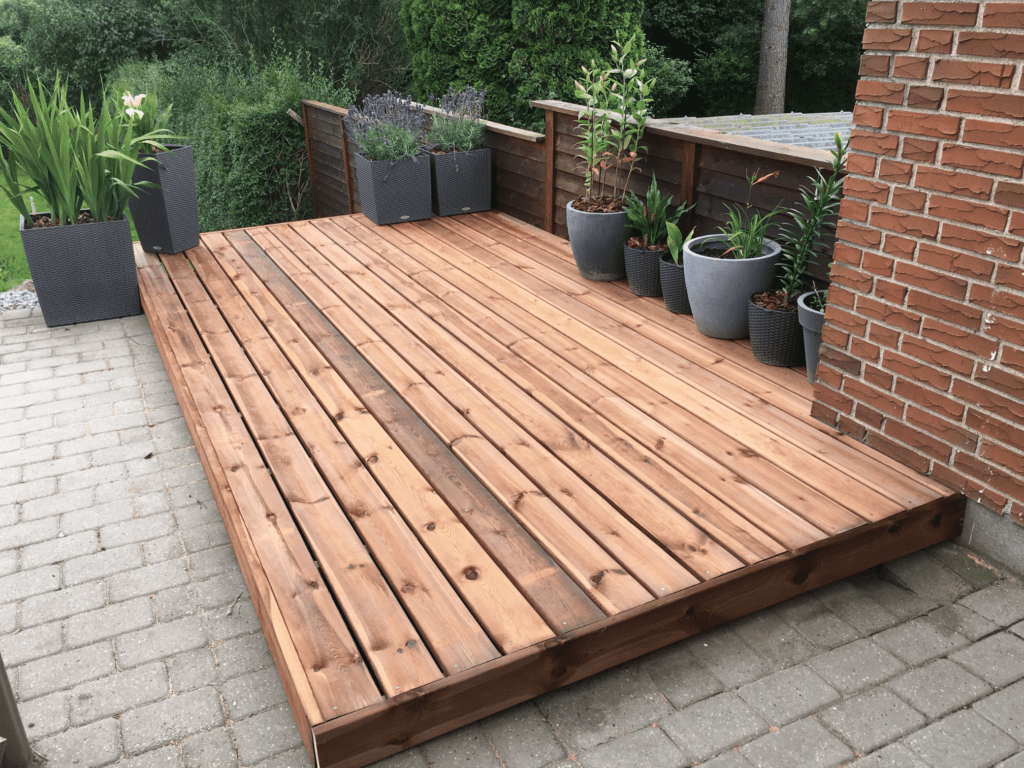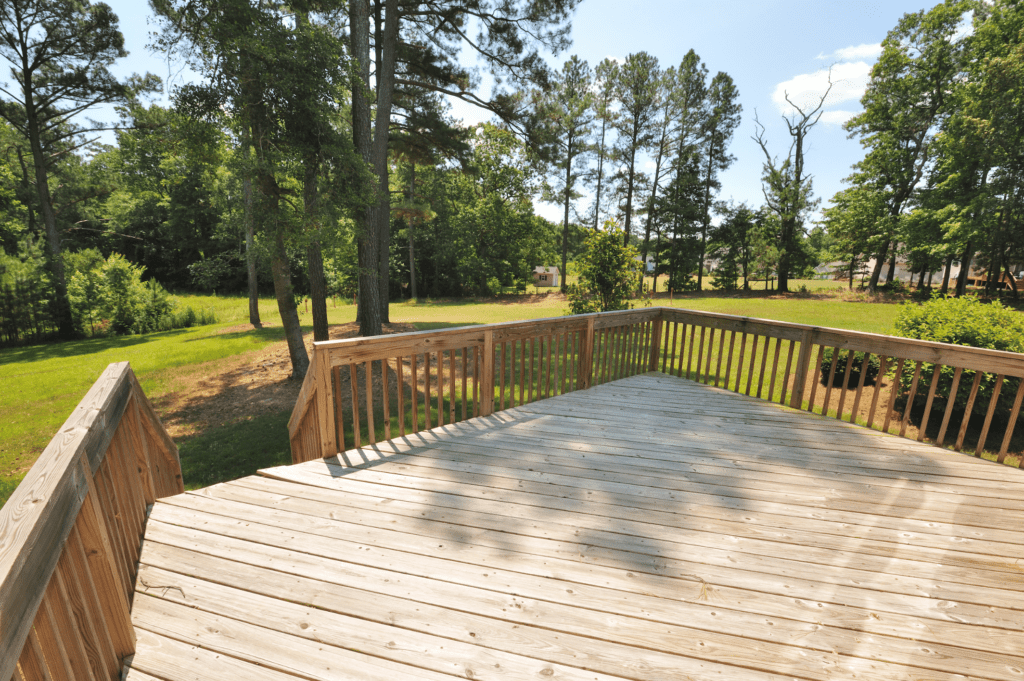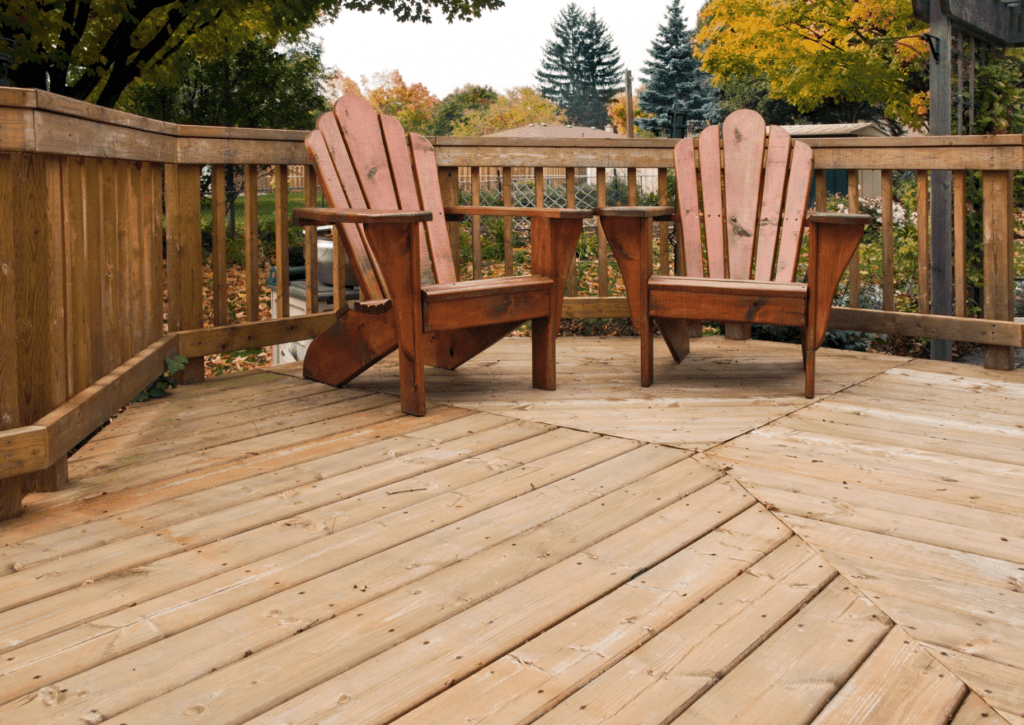
Introduction
Welcome to our blog, where we will delve into deck staining, offering insider tips and tricks to help you master this essential aspect of home maintenance and improvement. Whether you’re a homeowner looking to revitalize your outdoor space or a business seeking to enhance your commercial property, our expert advice and techniques will help you achieve professional results. From choosing the right products to mastering application and finishing, we’ve got you covered. So, let’s unlock the secrets of deck staining together!
Choosing the Right Stain
When planning to stain your deck, it’s essential to consider the type of wood you’re working with. Different stains interact differently with various wood species and grains, so finding the right match is crucial. Consider the local climate when choosing a stain, as it needs to withstand the specific weather conditions in your area. Another essential factor to consider is the level of transparency you want the stain to provide – whether you prefer a transparent, semi-transparent, or solid color stain to achieve your desired look. And don’t forget to ensure that the stain you choose offers UV protection to safeguard your deck from fading and sun damage.
Understanding Different Stain Types
Various options exist when choosing the right stain for your deck. Water-based stains are an excellent choice for humid climates as they dry quickly and are eco-friendly. On the other hand, oil-based stains penetrate the wood deeply, offering outstanding protection and a rich color finish. If you’re looking for a more controlled application, gel stains, with their thicker consistency, are a suitable option, especially for vertical surfaces. On the other hand, semi-transparent stains are an excellent choice for those who want to maintain the natural beauty of the wood while adding color and protection. Each type of stain has unique benefits, so choosing based on your specific preferences and the environmental factors in your area is essential.
Considering Wood Type and Climate
Softwoods like cedar may require a different type of stain than hardwoods such as oak or mahogany. In humid environments, mold and mildew-resistant stains are essential to maintain the longevity of the deck’s appearance. Harsh sunlight may necessitate UV-resistant stains to prevent premature fading and deterioration of the wood surface. Conversely, dry climates may benefit from moisture-resistant stains to combat potential cracking or warping of the wood. Considering these environmental factors can help ensure your deck’s longevity and aesthetic appeal, regardless of the prevailing conditions.

Preparation and Cleaning
Before staining your deck, starting with a clean surface free of any debris or dirt is crucial to achieve a smooth and uniform finish. Take the time to thoroughly inspect the deck for signs of damage, such as cracks or rot, and make any necessary repairs before proceeding with the staining process. Ensure the deck surface is meticulously cleaned using a suitable cleaner to eliminate dirt, mildew, and old stains or paint residues. You might want to sand the deck for better stain adhesion, leading to a more durable finish and enhanced visual appeal.
Inspecting and Repairing the Deck Surface
Carefully examining the entire deck surface ensures a successful staining process. Look out for loose boards, protruding nails, or any signs of water damage that could hinder the application of the stain. It’s essential to repair any damaged areas by replacing rotten wood, securing loose boards, and addressing protruding nails to establish a sturdy foundation for the stain. Checking for structural issues such as weak spots or uneven surfaces is vital before proceeding with the staining process. Taking preventive measures by sealing any cracks or gaps in the wood will help prevent moisture from penetrating and causing further damage, ultimately prolonging the lifespan of your deck.
Cleaning and Sanding for Optimal Results
To prepare your deck for staining, it’s essential to start with a thorough cleaning process. You can effectively eliminate dirt, grime, and mold from the surface using a high-quality deck cleaner and a stiff brush or pressure washer. Once the cleaning is complete, allowing ample time for the deck to dry completely is crucial before moving on to the sanding process. When sanding, a power sander with fine-grit sandpaper is recommended to ensure a smooth surface, paying particular attention to corners and edges. Sanding opens the wood pores, allowing for better stain penetration and ultimately contributing to an enhanced and long-lasting finish.

Application Techniques
Choosing the correct application method is essential for a flawless deck staining process. A brush is ideal for intricate areas and ensuring even coverage, while spraying can efficiently cover large, open areas, although careful masking is vital to prevent overspray. Rolling is an excellent choice for even application on large, flat surfaces such as decks and patios. To achieve the best results, a combination of brushing, spraying, and rolling can be employed for different deck parts, guaranteeing a professional and uniform finish.
Brushing vs. Spraying vs. Rolling
When it comes to applying stain to your deck, each technique offers its own set of advantages. Brushing provides precise control, making it ideal for intricate areas and ensuring even coverage in corners and edges where sprayers may have difficulty reaching. On the other hand, spraying allows for quick and even application on large, open surfaces, provided that it’s done with careful consideration to prevent overspray. Rolling efficiently covers expansive flat areas, although reaching into cracks and crevices may require extra effort. You can achieve a professional finish by strategically combining these techniques, highlighting each method’s unique benefits.
Applying Multiple Coats for Durability
To achieve optimal results when applying stains to your deck, following a few essential techniques is crucial. Applying multiple thin coats rather than one thick coat ensures better adherence and contributes to the finish’s longevity. Allowing each coat to fully dry before applying the next layer is essential to prevent uneven drying or tackiness, resulting in a smooth and uniform finish. Consider using different stain colors or opacities for the base and top coats to achieve the desired aesthetics and protection. Adding a clear sealant as the final coat can enhance durability and provide additional protection against weathering, ultimately prolonging the lifespan of your deck’s finish.

Timing and Weather Considerations
When choosing the perfect time for deck staining, it’s crucial to consider the weather conditions. Opt for a dry and mild day, ideally with temperatures ranging between 50-90°F, to facilitate optimal drying and absorption of the stain. Avoid staining in direct sunlight, leading to uneven application or premature drying. Be sure to check the weather forecast for at least 24-48 hours of dry conditions to allow the stain to cure fully without any interference from rain or moisture. Choose early morning or late afternoon for staining to take advantage of cooler temperatures and avoid the intense midday heat, ensuring the best possible results for your deck.
Ideal Conditions for Staining
Aim for low humidity to help the stain dry properly and adhere well for the best results when staining your deck. Choose a day with little wind to avoid debris interfering with the fresh paint, ensuring a smooth finish. Also, pick a time when the wood surface isn’t too hot to the touch to prevent uneven coating due to rapid evaporation. Stain during stable weather to minimize the risk of unexpected rain or temperature changes, creating an ideal staining experience.
Avoiding Common Weather-related Mistakes
When timing your deck staining, it’s essential to avoid potential pitfalls that can affect the quality of the finish. Staining on rainy or foggy days and during high temperatures can compromise the integrity of the stain, leading to uneven drying and adhesion. Being mindful of early morning dew and late evening condensation is crucial to ensure optimal absorption and adherence of the paint to the wood surface. Steering clear of these conditions allows you to set the stage for a successful and long-lasting deck-staining outcome.

Maintenance and Longevity
Regular cleaning with a mild detergent is essential for preserving the deck’s visual appeal and long-term durability. A high-quality sealant shields the wood from moisture, UV rays, and everyday wear and tear and prolongs its lifespan. Annual inspection for rot, mold, or mildew signs is crucial for early detection and preventing severe damage. Regarding repairs, utilizing pressure-treated lumber can significantly extend the deck’s overall longevity.
Sealing and Protecting the Stained Deck
When preserving your stained deck’s longevity and visual appeal, choosing a high-quality sealant designed explicitly for stained decks is vital. Applying the sealant evenly with a paintbrush or roller provides thorough protection against the elements, improving durability and color retention. Regularly inspecting the sealed deck for signs of wear or damage, especially after extreme weather, is essential for addressing any issues promptly. Following the manufacturer’s recommendations for reapplying the sealant will also help maintain optimal protection, ensuring your deck’s long-term beauty and integrity.
Regular Maintenance Tips for Prolonged Beauty
Mastering the art of deck staining isn’t just about the application process – it also involves ongoing maintenance to preserve your deck’s beauty and structural integrity. Regular sweeping to clear debris and leaves is essential in preventing staining and minimizing long-term damage, while trimming nearby vegetation can reduce organic debris accumulation. Periodically checking for loose nails or screws and tightening them ensures structural safety. Consider refreshing your deck with a fresh coat of stain every few years to revitalize its appearance and protection, extending its longevity and appeal. These simple maintenance practices can make a significant difference in the long-term health of your deck.

Frequently Asked Questions
How often should a deck be stained?
The frequency of staining your deck depends on various factors, such as the type of wood used and the weather conditions it’s exposed to. A good rule of thumb is to stain your deck every 2-3 years to ensure optimal protection and maintenance. However, watch for signs like color fading or water no longer beading on the surface, as these indicate that it’s time to re-stain your deck. Regular inspections for wear and tear will also help you determine when it’s time for a fresh coat of stain, ensuring your deck’s long-term beauty and durability.
What is the best time of year to stain a deck?
The best time of year to stain a deck is during the late spring or early summer when the weather is mild and dry, allowing the stain to adhere to the wood properly. Avoid staining your deck in extreme temperatures, such as during very hot or cold weather, as it can affect the application and drying process of the stain. It’s also important to check the weather forecast before staining to ensure there are no rain showers in the forecast for at least 48 hours after application, as moisture can ruin the finish. Consider staining your deck in the late afternoon or early evening to prevent direct sunlight, which can cause the stain to dry too quickly and result in an uneven finish.
How can I choose the right stain for my deck?
When selecting a stain for your deck, it’s essential to consider the wood type and its natural color to ensure that the chosen stain complements the existing tones. Factor in the level of maintenance you are willing to commit to, as different stains may require varying degrees of reapplication. Take into account the climate of your region as well, as extreme weather conditions can impact the durability of certain stain types. To make an informed decision, test a small, inconspicuous area with different stain options to see how they appear on your deck before finalizing your choice. These considerations will help you choose a stain that not only enhances the natural beauty of your deck but also aligns with your lifestyle and the environmental factors affecting your deck.
What preparations are necessary before staining a deck?
Creating a pristine work area is essential, so remove all furniture, plants, and decor from the deck. Thoroughly inspect the wood for any loose boards, nails, or screws, and address any issues to achieve a seamless surface. Utilize a pressure washer or deck cleaner to meticulously clean the deck, eliminating dirt, mildew, and any remnants of old stain or paint. Patience is key – allow the deck to completely dry for at least 48 hours before embarking on the staining process to ensure optimal results. These preparatory steps lay the foundation for a successful deck-staining venture.

Conclusion
In conclusion, mastering the art of deck staining involves carefully considering stain types, wood type, and climate, along with thorough preparation and cleaning. The proper application technique and timing are crucial for achieving optimal results considering weather conditions. Moreover, prioritizing regular maintenance, proper sealing, and protection with a high-quality sealant is essential for preserving the stained deck’s longevity and visual appeal. By adhering to these insider tips and tricks, homeowners can ensure their deck’s beauty and structural integrity for years.




